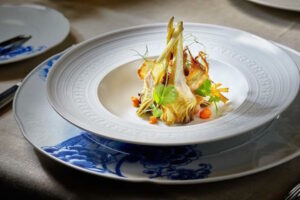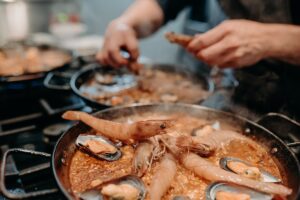Last Updated on December 13, 2025 by Devour Tours | Published: November 26, 2019
Madrid is a fascinating mix of historic and modern. On streets such as Calle Fuencarral, you can find symbols of globalization and modernization such as Starbucks, Dunkin’ Donuts, and an Adidas shop. However, nestled amongst the commerce, you will find the small Virgen de la Soledad chapel, dating back to 1712.
But the hidden gems don’t end there. Plenty of foodies head to the Salamanca district bound for one of Europe’s most celebrated Michelin star Mexican restaurants, Punto MX. What many don’t realize is that it’s a mere five-minute walk from the centennial Mercado de la Paz.
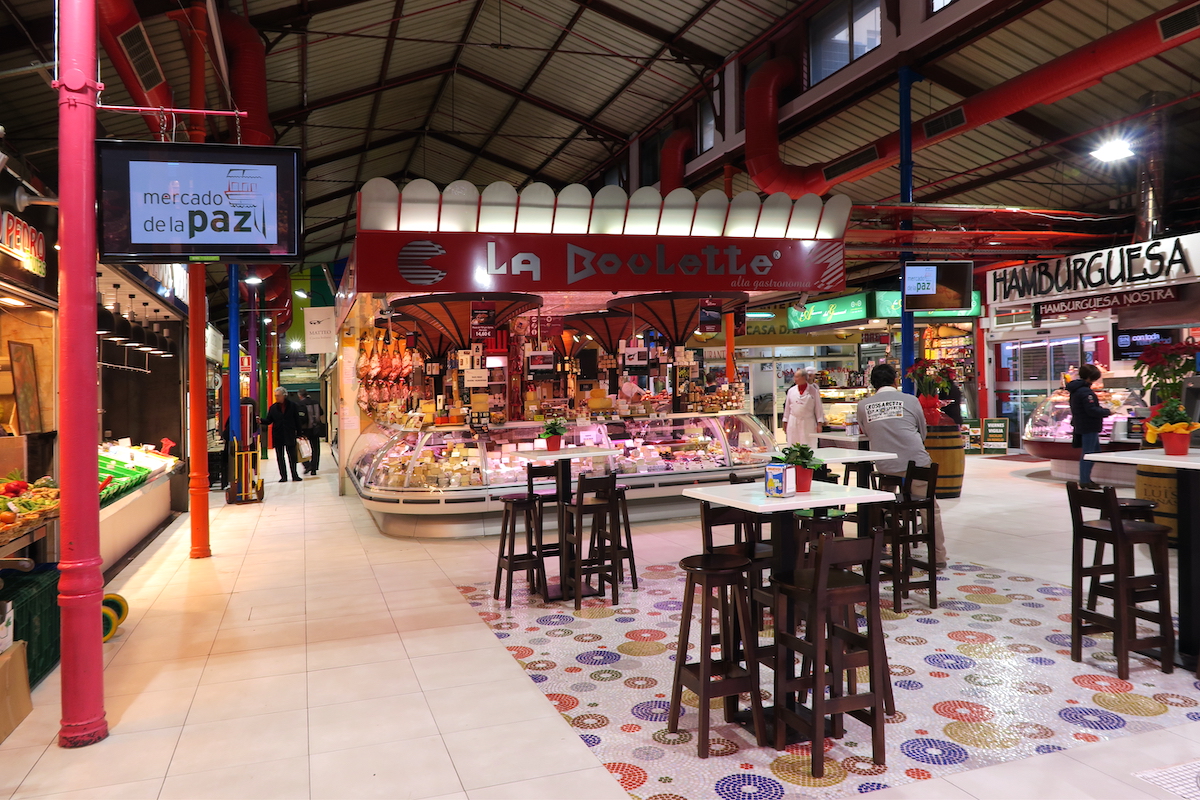
The Madrid local government introduced the centennial plaques in 2006 to honor businesses that have withstood the test of time in Spain’s capital city. In a city as dynamic and modern as Madrid, it’s important to celebrate the small businesses that have historically defined commerce.
Keep an eye out for these gold plaques set into the pavement outside certain Madrid businesses—it’s a badge of honor signifying that they’ve been around for more than 100 years! Currently there are more than 170 establishments which have been awarded centennial plaques by the city hall. With so many options and a limited itinerary, here is a list of seven must-visit businesses that have defined the city of Madrid.
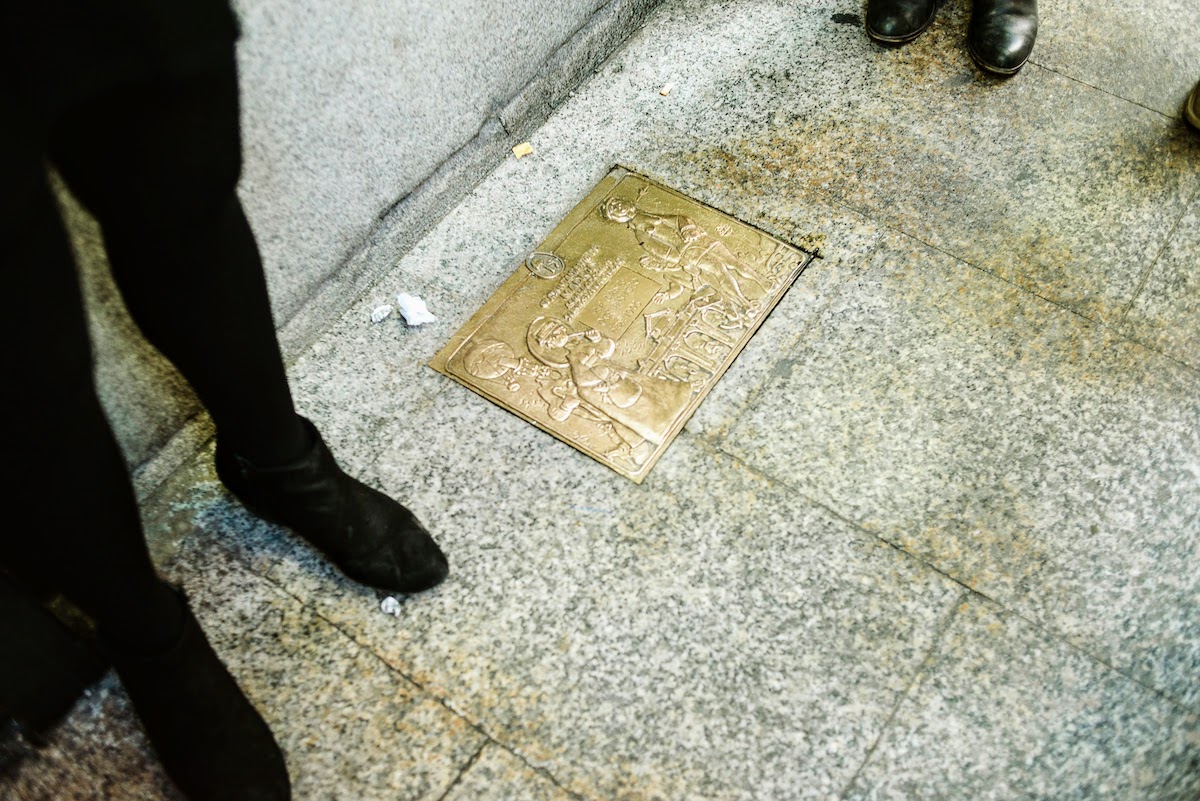
What's Included
Mercado de la Cebada
Open since: 1875
If you’re serious about experiencing the food scene in any European city, a visit to a local market is a must. And out of the 46 municipal markets in Madrid, there’s no better place to see the incredible variety of products available in Madrid than by visiting the centennial Mercado de la Cebada in the central La Latina neighborhood.
To my chagrin, a substantial number of visitors to the capital prioritize visiting the San Miguel Market. Although beautiful and centrally located, there is very little local or authentic about it. Seldom do visitors know that a mere 10-minute walk will bring them to Mercado de la Cebada, a truly local market with more than 100 years of history.
Inaugurated in 1875, it is one of Madrid’s largest markets with more than 80 vendors. From butchers and fishmongers to shoe repair and sushi stalls, Mercado de la Cebada is an important part of the La Latina social fabric, where relationships between vendors and clientele can stretch back generations.
Local tip: Stop by on Saturdays, when the market comes to life as the fishmongers break out griddles and cook their products to order along with very affordable wine and beer.
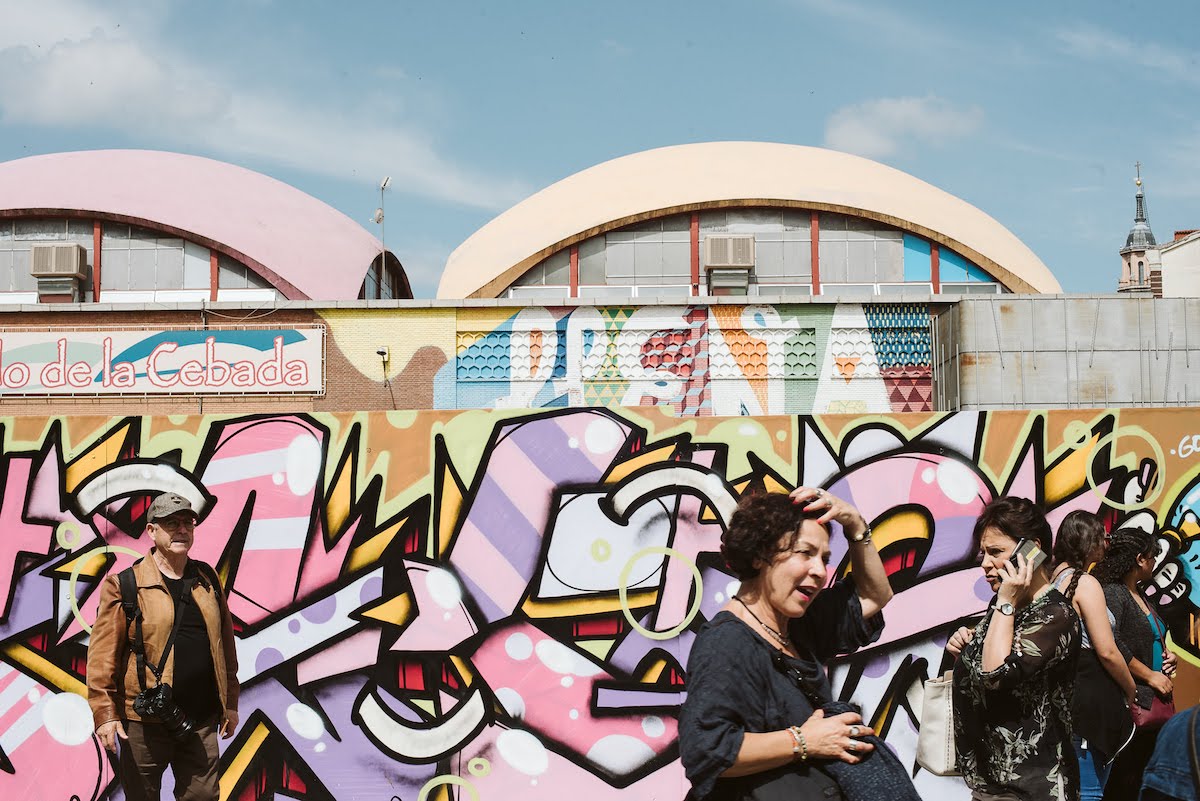
Calzados Lobo
Open since: 1892
Just a stone’s throw from Plaza Mayor, you’ll find Calzados Lobo, inevitably with a line of locals waiting to buy alpargatas or espadrilles for around €9 (depending on the model).
These traditional Spanish summer shoes make perfect gifts given their simplicity and cultural relevance. And there’s no better place to get it than at Calzados Lobo, which opened in 1892 and to this day only carries products made in Spain.
Antigua Pastelería del Pozo
Madrid’s oldest pastry shop, La Antigua Pastelería del Pozo, is conveniently located near the busy Puerta del Sol.
Originally opened in 1830, it’s known for its traditional method of baking Madrid’s most classic pastries. From their palmera de chocolate—pastry dough covered in chocolate—to their bayonesas—pastry dough filled with candied pumpkin called cabello de ángel—all of their products are made in-house.
If you are fortunate to be in Madrid around the Christmas season, buy some marzipan and Spanish turrón, a traditional Christmas season sweet made from almonds and other local nuts. It makes for a great gastronomic present for foodie friends and family back home.
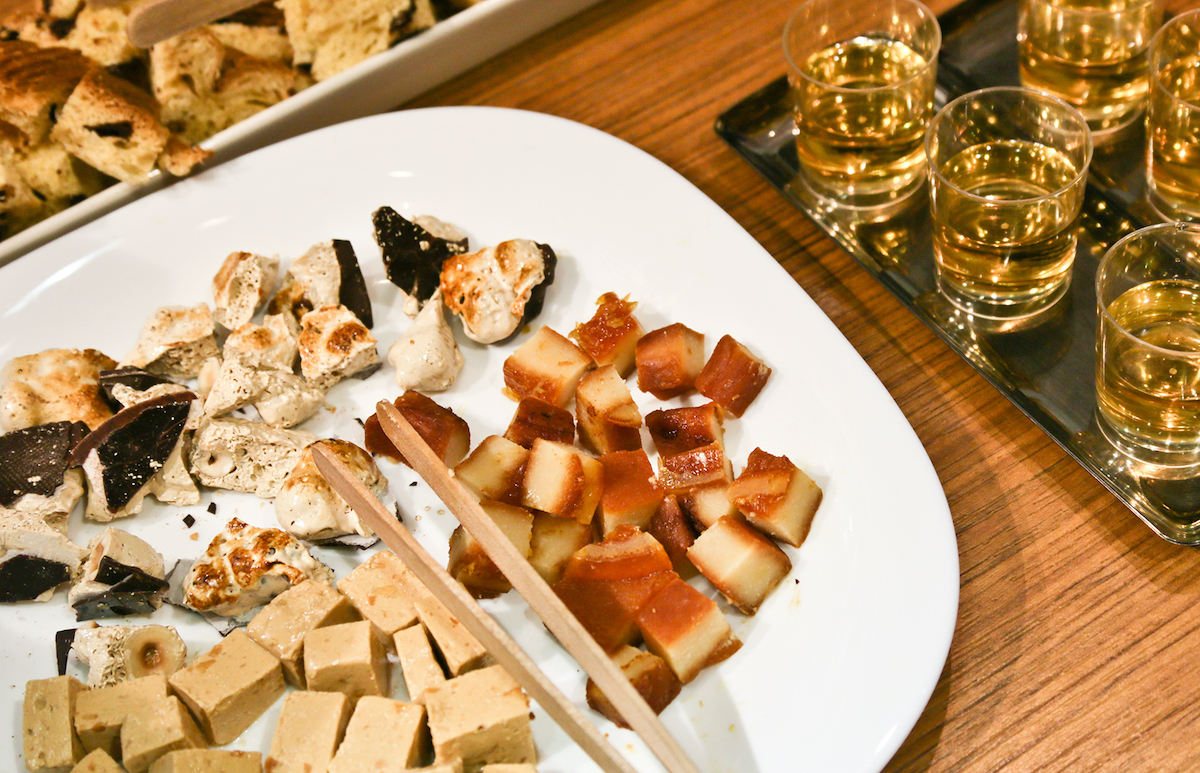
La Ardosa
Open since: 1892
A heavily debated culinary subject in Madrid is where to find the best tortilla, or Spanish omelette. I would never want to weigh in and name my favorite here, but it’s widely recognized that Bodegas La Ardosa belongs on any list.
One of the first bars in Madrid to import foreign beers such as Guiness and Pilsner Urquell, Bodegas La Ardosa dates back to the year 1892, when Rafael Fernandez Bagena opened a tavern with the goal of selling wines from his hometown in Toledo.
From the tile work to the tortilla, everything here is what you need in a classic Madrid tavern. When the bar is full, patrons are invited to pass underneath the bar to a back room next to the kitchen. The vermouth is fantastic, as are their sherry wines paired with mojama, a type of salt-cured tuna served with marcona almonds and olive oil.
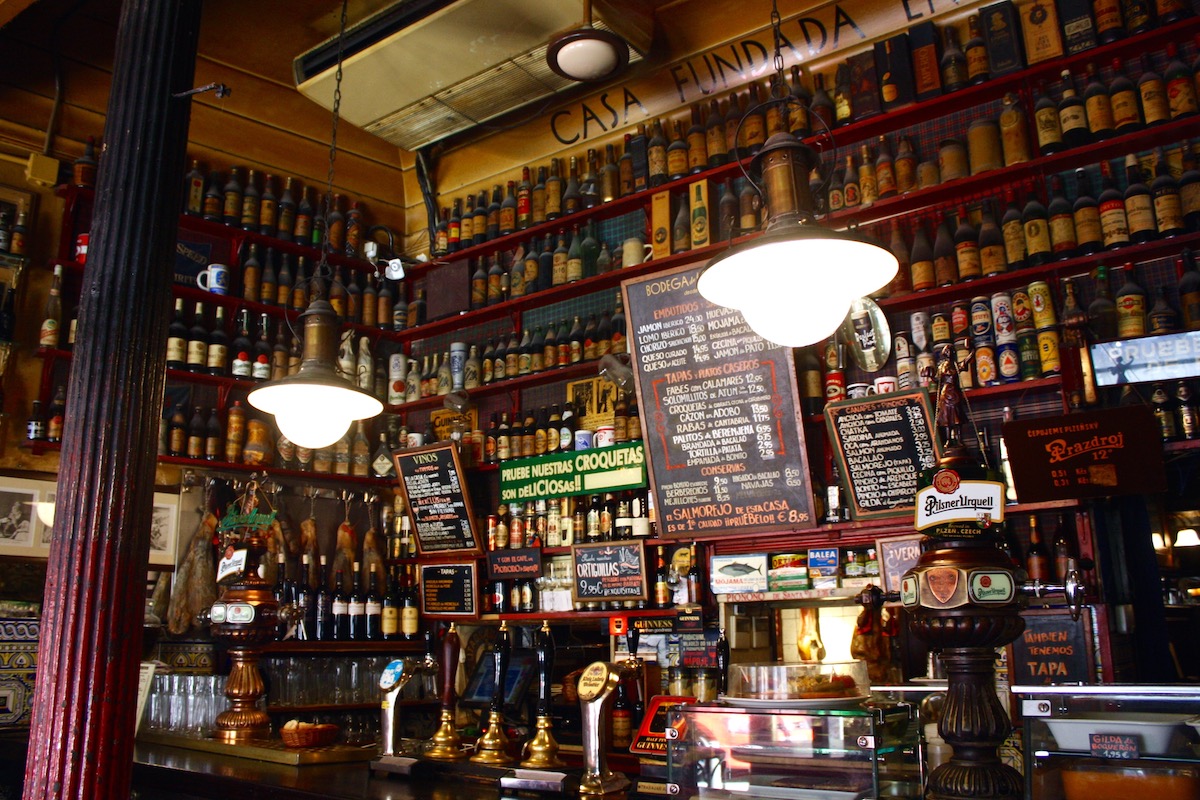
Casa Diego
Open since: 1823
Once again breaking away from Madrid’s culinary offerings, a must visit is the emblematic Casa de Diego located in the heart of the Puerta del Sol square. Since 1823, they have been making and selling abanicos, the classic Spanish fans, as well as umbrellas, canes, and the famous mantones, or shawls.
Although it’s located in the epicenter of tourism in Madrid, walk in and you’ll find yourself amongst locals as if time has stood still. The shopkeepers behind the counter fetch your product with an attention to detail uncharacteristic of most other businesses in Puerta del Sol.
It’s true that you can buy plastic cheap abanicos throughout the city, but go ahead and spend the extra Euros at Casa Diego—it’s well worth it and the experience of shopping here is truly unique.
Casa Labra
Open since: 1860
With a fantastic mix of history and the preservation of Madrid’s gastronomic tradition, Casa Labra (Calle de Tetuán, 12) is a must visit.
Originally opened in 1860, little has changed here in nearly 160 years. From the original family recipe for the tajada de bacalao and croquetas de bacalao (salt cod fritters and croquettes, respectively), to the tile work and two-line system where patrons have to line up first to order food and then their drink, much of what makes Casa Labra great has stayed the same.
As if this weren’t reason enough to exalt Casa Labra, take a glance at the dilapidated plaque to the left above the entrance proclaiming Casa Labra to be where the Spanish SOE (Socialist Party) was founded in 1879. It was originally a clandestine political party formed behind Casa Labra’s closed doors by workers calling for basic rights such as the right to strike and the prohibition of child labor. Now called the PSOE, it’s risen to being the party most voted in the 2019 Spanish general elections. For history lovers and foodies alike, Casa Labra is a must for a caña and a tajada de bacalao.
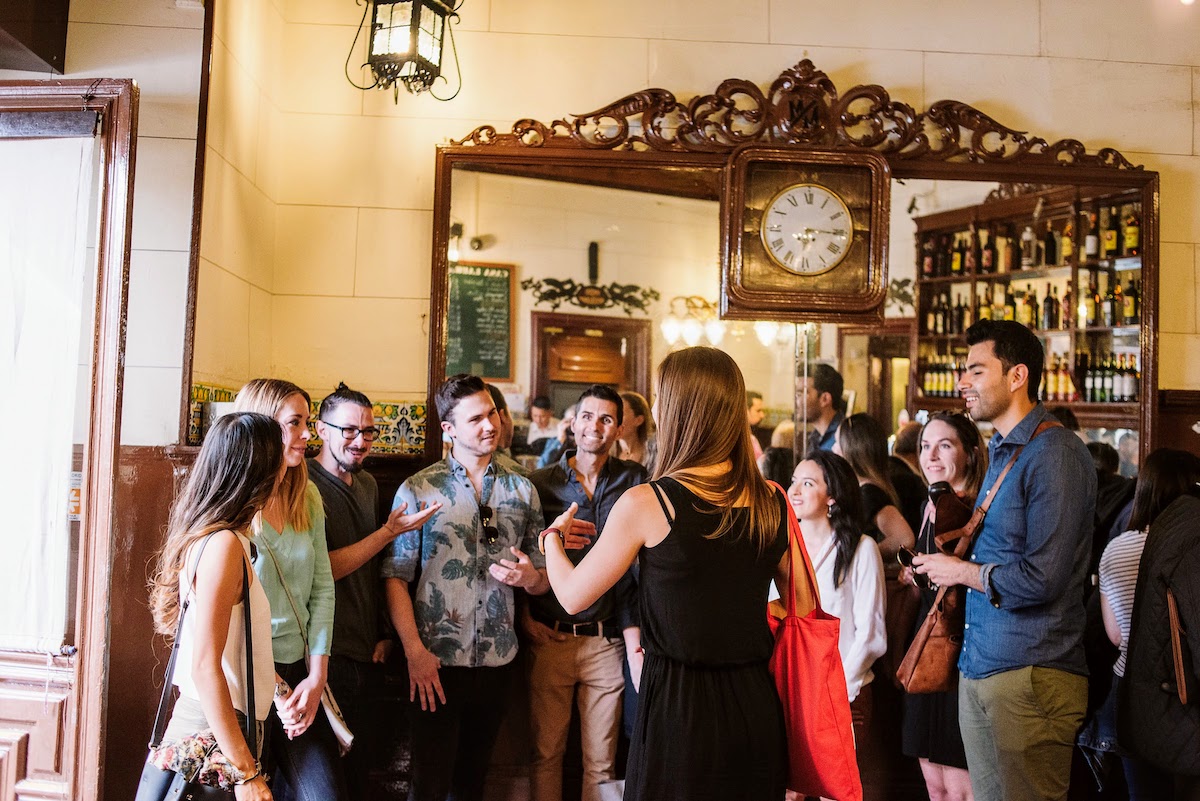
Mariano Madrueño
Open since: 1895
Once again located in the central Sol district, shoppers looking for a classic wine shop with over 100 years of history need look no further than Mariano Madrueño.
Founded in 1895 by Mariano Madrueño, the grandfather of the current owner, this family-run wine shop originally specialized in their own wines, vermouths, and spirits produced outside the city, but began to carry important national wines following the Civil War. Nowadays, it’s a reference wine shop in Madrid.
For an interesting gift to take home, pick up a bottle of their own wine, Apnea, made in honor of the owner’s daughter, Laura Madrueño. You’ll be taking home a piece of Madrid history for less than €10!
Update notice: This article was updated on July 10, 2023.
Want to dine at some of our favorite centennial businesses in Madrid like a local? Let us take you out for a tapas crawl combined with a fascinating history walk. Our Tapas, Taverns & History Tour takes you inside some of Madrid’s most storied establishments—and yes, most of the places we visit have that famous gold plaque.
